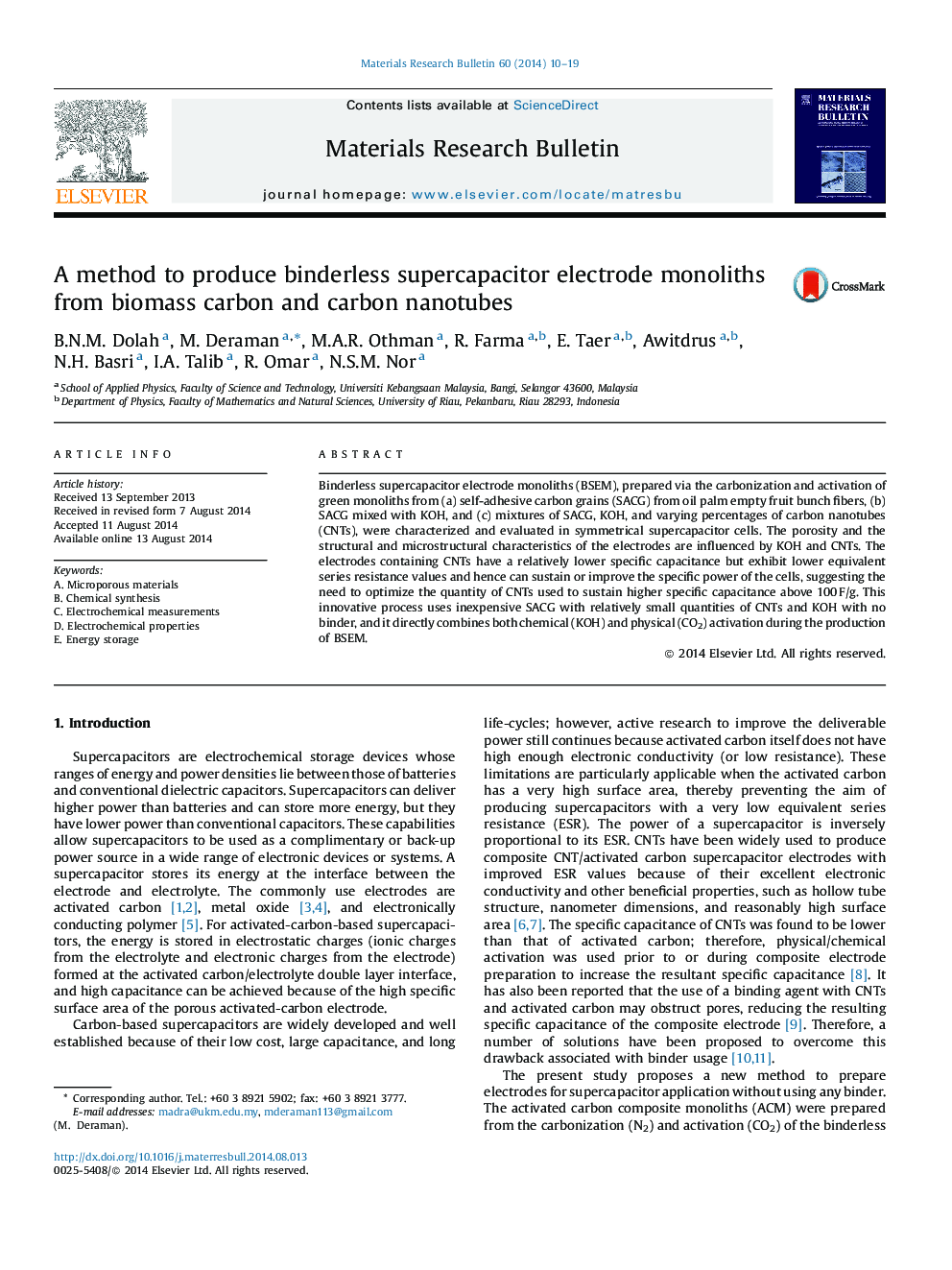| Article ID | Journal | Published Year | Pages | File Type |
|---|---|---|---|---|
| 1487806 | Materials Research Bulletin | 2014 | 10 Pages |
•Self-adhesive carbon grains (SACG) were prepared from oil palm empty fruit bunches.•Green monoliths (GMs) were prepared from SACG, KOH, and carbon nanotubes (CNTs).•GMs were chemically and physically activated into supercapacitor electrodes.•A small quantity of CNTs can reduce the resistance of supercapacitor cells.•This process which uses a very small quantity of KOH can improve cells performance.
Binderless supercapacitor electrode monoliths (BSEM), prepared via the carbonization and activation of green monoliths from (a) self-adhesive carbon grains (SACG) from oil palm empty fruit bunch fibers, (b) SACG mixed with KOH, and (c) mixtures of SACG, KOH, and varying percentages of carbon nanotubes (CNTs), were characterized and evaluated in symmetrical supercapacitor cells. The porosity and the structural and microstructural characteristics of the electrodes are influenced by KOH and CNTs. The electrodes containing CNTs have a relatively lower specific capacitance but exhibit lower equivalent series resistance values and hence can sustain or improve the specific power of the cells, suggesting the need to optimize the quantity of CNTs used to sustain higher specific capacitance above 100 F/g. This innovative process uses inexpensive SACG with relatively small quantities of CNTs and KOH with no binder, and it directly combines both chemical (KOH) and physical (CO2) activation during the production of BSEM.
Graphical abstractFigure optionsDownload full-size imageDownload as PowerPoint slide
